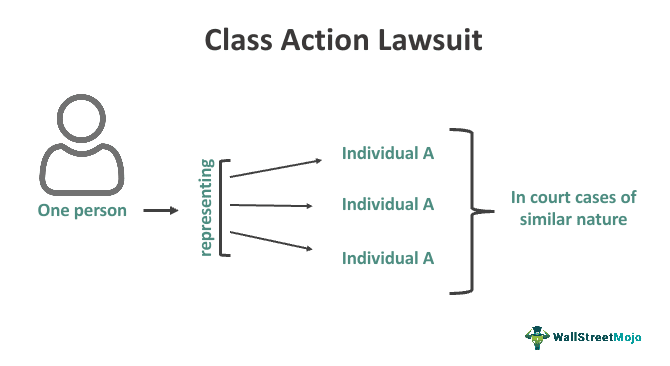Comprehending Class Activity Claim: A Guide for Lawyers
Course action lawsuits have actually become an important component of the legal landscape, permitting the consolidation of multiple claims into a solitary activity. For attorneys, understanding the ins and outs of class activity litigation is crucial in effectively representing their clients. This thorough guide discovers the basics of course activity lawsuits, from determining potential class members to browsing the qualification process. Additionally, it explores vital techniques for handling class activity litigation and offers insights into obtaining and working out authorization for settlements. By delving into the details of course activity claims, this overview furnishes legal representatives with the expertise and tools needed to effectively navigate this complex location of law.
The Basics of Course Activity Legal Actions
Course activity claims are a legal system used to combine comparable cases from a team of people right into a single claim, providing a reliable and affordable method to looking for justice and resolution. This kind of lawsuit allows a depictive plaintiff, acting upon part of the entire class, to bring a case against a defendant who has allegedly caused injury or violated the legal rights of multiple individuals.
The basic requirements for bringing a class action lawsuit include numerosity, commonality, typicality, and adequacy of representation. Numerosity refers to the truth that the course should be so huge that joinder of all participants would certainly be not practical.
Class activity lawsuits can be beneficial for both offenders and plaintiffs. For plaintiffs, it allows them to pool their resources and share the prices and risks related to litigation. When they are up versus large companies or entities, it likewise offers a level playing field. For defendants, it offers the possibility to successfully fix numerous insurance claims in a single claim, preventing the demand to resist many individual lawsuits.
Identifying and Assessing Prospective Course Members
After developing the basic demands for a class activity claim, the next action is to recognize and analyze potential course members. If they fulfill the required standards., this procedure involves determining who might be component of the class and reviewing their claims to identify.
To identify prospective course participants, lawyers usually perform extensive study and gather appropriate details. This may involve examining documents, conducting interviews, and checking out records to determine people or entities that might have been affected by the claimed misdeed. It is crucial to establish a detailed and clear listing of prospective class members to ensure that all impacted events are consisted of in the suit.
As soon as prospective course participants have actually been recognized, the next action is to analyze their claims. This entails examining the qualities of each private claim to figure out if they meet the lawful needs for class qualification. Legal representatives should very carefully examine the truths, proof, and legal concepts of each potential class participant's claim to ensure that they have a feasible instance.
Assessing potential course participants also involves figuring out whether they satisfy the class interpretation and have experienced similar injury as a result of the offender's actions. This calls for contrasting the realities and circumstances of each potential class member's circumstance to the accusations and lawful concepts presented in the lawsuit.
Navigating the Course Certification Process
To effectively navigate the class certification process, attorneys have to carefully abide by the procedural needs stated by the court. Class accreditation is an essential action in a course activity legal action, as it establishes whether a case can continue as a course activity, standing for a group of individuals who have similar claims against a defendant. The process includes satisfying details criteria, such as numerosity, commonality, typicality, and adequacy of representation.
Firstly, lawyers need to establish numerosity by demonstrating that the course is so large that individual joinder is impractical. This requires a detailed evaluation of the defenses and cases included.
Following, legal representatives should reveal typicality, which suggests that the depictive complainant's cases are regular of the claims of the class members. This guarantees that the passions of the depictive complainant straighten with the passions of the class. Finally, legal representatives must show competence of representation, meaning that the representative plaintiff and their advise will fairly and properly stand for the passions of the course.
To browse this procedure successfully, attorneys must completely prepare by conducting extensive study, gathering try this evidence, and establishing an engaging debate that pleases each of these criteria. They have to additionally be prepared to react to any objections or obstacles elevated by the defendant. By vigilantly sticking to the procedural needs set forth by the court, attorneys can boost their opportunities of getting course certification and progressing the rate of interests of the class members.

Secret Methods for Managing Course Activity Lawsuits
Upon effectively browsing the class qualification procedure, legal representatives need to then carry out essential techniques for efficiently taking care of course action lawsuits. These approaches are crucial to ensure that the situation proceeds efficiently and efficiently, inevitably optimizing the chances of a desirable result for the course members.
One key approach is to develop a solid and cohesive lawful team (Class action lawsuit). This involves constructing a group of lawyers with proficiency in class activity lawsuits, as well as various other pertinent locations such as the certain market or subject included in the situation. A versatile team can bring different viewpoints and abilities to the table, enhancing the general performance of the litigation
Another vital method is to establish a well-thought-out and extensive lawsuits strategy. This strategy needs to lay out the general goals of the instance, along with the specific legal theories and debates that will be gone after. It should additionally consist of a timeline and budget to guarantee that the case remains on track and within the allocated resources.
Furthermore, lawyers must actively engage with the course members throughout the lawsuits procedure (Class action lawsuit). This includes giving regular updates on the development of the case, seeking input and feedback from the class participants, and attending to any type of worries or concerns they might have. By promoting open interaction and collaboration, lawyers can construct trust and assistance amongst the class members, which can be crucial in attaining a click successful resolution
Working Out Course Action Suits: Negotiation and Approval
When it concerns settling class action legal actions, effective settlement and obtaining authorization are vital action in attaining a resolution. Class action claims are intricate and include why not try here a big number of complainants, making it vital to reach a settlement that is satisfying and reasonable to all celebrations included.

As soon as a negotiation agreement is reached, it has to be approved by the court. The court's duty in this process is to guarantee that the settlement is reasonable, reasonable, and properly shields the interests of the course participants. The court will consider aspects such as the nature of the insurance claims, the stamina of the evidence, the possible recovery for the class members, and any type of arguments increased by class members.
Obtaining court authorization is important as it provides finality to the negotiation and secures the interests of the course members. It ensures that the settlement is binding and enforceable, and course participants can obtain their rightful payment.
Final Thought

Class activity claims have become an integral part of the lawful landscape, permitting for the combination of numerous insurance claims into a single action. Course qualification is a vital action in a course activity legal action, as it identifies whether an instance can continue as a course activity, representing a team of people who have comparable claims versus a defendant. By faithfully sticking to the procedural needs set forth by the court, legal representatives can increase their possibilities of acquiring course accreditation and progressing the interests of the class participants.
The court will certainly consider elements such as the nature of the claims, the stamina of the proof, the prospective recovery for the course members, and any kind of objections increased by class participants.
By recognizing and examining possible course participants, attorneys can determine the practicality of a course action suit.